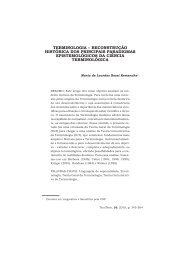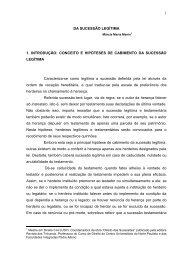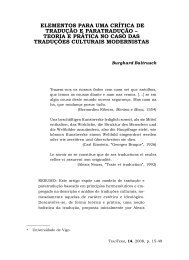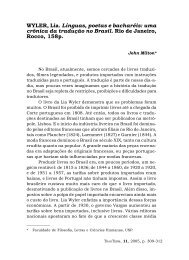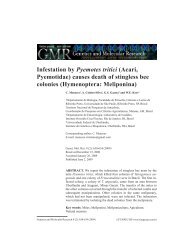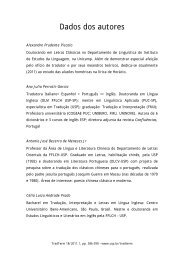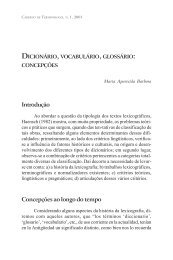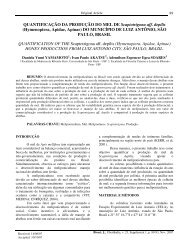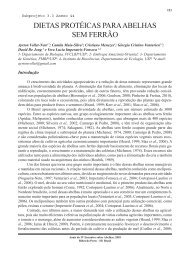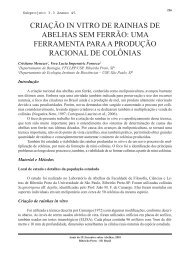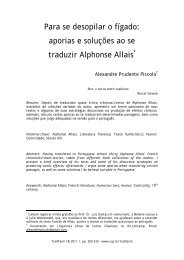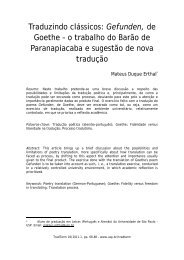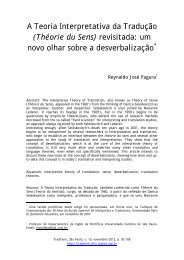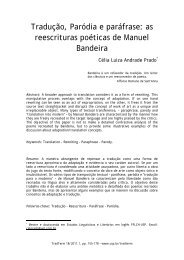Bees as pollinators in Brazil - USP
Bees as pollinators in Brazil - USP
Bees as pollinators in Brazil - USP
Create successful ePaper yourself
Turn your PDF publications into a flip-book with our unique Google optimized e-Paper software.
80<br />
the services of <strong>poll<strong>in</strong>ators</strong> were available. This<br />
<strong>in</strong>cre<strong>as</strong>e represents an extra <strong>in</strong>come of<br />
US$1860.55 per ha per year. Ricketts, et al.,<br />
(2004), showed that poll<strong>in</strong>at<strong>in</strong>g services from<br />
two small fragments (46 and 111 ha) could be<br />
translated <strong>in</strong>to ~US$60,000 per year for one<br />
Costa Rica farm.<br />
All these results stressed the importance<br />
of conserv<strong>in</strong>g forest fragments and nest<strong>in</strong>g<br />
places for social and solitary bee species (Kle<strong>in</strong>,<br />
et al., 2003c, Ricketts, et al., 2004), which can<br />
act <strong>as</strong> service-provid<strong>in</strong>g units (Luck, et al.,<br />
2003) for coffee poll<strong>in</strong>ation. The costs of<br />
ma<strong>in</strong>ta<strong>in</strong><strong>in</strong>g conservation are<strong>as</strong> are far exceeded<br />
by the economic benefits that the service of<br />
<strong>poll<strong>in</strong>ators</strong> br<strong>in</strong>gs for agriculture. In this way,<br />
conserv<strong>in</strong>g natural are<strong>as</strong> nearby coffee farms<br />
can be translated <strong>in</strong>to advantages for biodiversity<br />
and agriculture (Allen-Wardell, et al., 1998,<br />
Ricketts, et al., 2004).<br />
St<strong>in</strong>gless bees management practices<br />
for use <strong>in</strong> agriculture<br />
Agricultural <strong>in</strong>tensification worldwide <strong>in</strong>cludes<br />
a decl<strong>in</strong>e <strong>in</strong> the proportion of natural habitat,<br />
an <strong>in</strong>cre<strong>as</strong>e <strong>in</strong> pesticide usage, a decre<strong>as</strong>e of<br />
floral resource on farm sites, <strong>as</strong> well <strong>as</strong> larger<br />
field sizes, crop monocultures, <strong>in</strong>tensive soil<br />
and water usages and the use of synthetic fertilizers.<br />
Of course, the susta<strong>in</strong>ability of agriculture<br />
follow<strong>in</strong>g these patterns of land use is<br />
under concern by 21 Agenda for Agriculture.<br />
Best management practices <strong>in</strong> agriculture<br />
for susta<strong>in</strong>able use and conservation of <strong>poll<strong>in</strong>ators</strong><br />
are focused <strong>in</strong> recent literature, and<br />
ma<strong>in</strong>ly by several authors that study <strong>poll<strong>in</strong>ators</strong>’<br />
conservation. This means to carry on pesticides<br />
and their use <strong>in</strong> the crops; gene flow<br />
studies; environmental friendly agricultural<br />
practices, <strong>in</strong>clud<strong>in</strong>g land preparation, <strong>in</strong> order<br />
to keep nests of solitary bees that occur <strong>in</strong> the<br />
soil; agricultural area and ma<strong>in</strong>tenance of their<br />
borders with native vegetation, or hedges that<br />
can keep <strong>poll<strong>in</strong>ators</strong>; to decre<strong>as</strong>e herbicides<br />
use <strong>in</strong> agricultural crops, that helps the forag<strong>in</strong>g<br />
supply for <strong>poll<strong>in</strong>ators</strong> and crop attractiveness<br />
for them, <strong>in</strong> larger are<strong>as</strong>.<br />
Although the already identified importance<br />
of <strong>poll<strong>in</strong>ators</strong> <strong>in</strong> agriculture (see also<br />
weevils for oil palm; bumble bees for tomatoes,<br />
among others; solitary bees for apple,<br />
pears and alfalfa, for <strong>in</strong>stance; st<strong>in</strong>gless bees<br />
for strawberry, guarana, <strong>as</strong>sai, coffee, among<br />
several other crops; honey bees for several<br />
crops) is well known, until now their use is not<br />
remarkable <strong>in</strong> undeveloped countries.<br />
However, this situation will change very soon,<br />
because of new <strong>in</strong>itiatives concern<strong>in</strong>g <strong>poll<strong>in</strong>ators</strong><br />
use <strong>in</strong> crops (for <strong>in</strong>stance, the <strong>Brazil</strong>ian<br />
Poll<strong>in</strong>ators Initiative) <strong>as</strong> well <strong>as</strong> from successful<br />
crops compet<strong>in</strong>g <strong>in</strong> world market, result<strong>in</strong>g<br />
from the <strong>poll<strong>in</strong>ators</strong> use <strong>in</strong> greenhouses, for<br />
<strong>in</strong>stance. Developed countries are work<strong>in</strong>g<br />
with <strong>poll<strong>in</strong>ators</strong>’ shortage, although only a<br />
small number of them (a dozen, accord<strong>in</strong>g to<br />
Kremen, 2004) are successful bred for agricultural<br />
use. If they are not available nearby due<br />
to the <strong>in</strong>tensive agricultural patterns us<strong>in</strong>g<br />
large are<strong>as</strong>, they are bought from biotech<br />
companies that breed them successfully. These<br />
companies are mult<strong>in</strong>ational and have the<br />
technology of large scale breed<strong>in</strong>g. The <strong>in</strong>troduction<br />
of alien <strong>poll<strong>in</strong>ators</strong> with def<strong>in</strong>ed<br />
breed<strong>in</strong>g techniques is also undesirable, and<br />
studies of ecological impact are <strong>as</strong>ked <strong>in</strong><br />
importation process. This stimulates the bread<strong>in</strong>g<br />
of native <strong>poll<strong>in</strong>ators</strong> for the same service <strong>in</strong><br />
countries with capacity build<strong>in</strong>g <strong>in</strong> poll<strong>in</strong>ation<br />
area. In many tropical and subtropical are<strong>as</strong> of<br />
the world, a new scenario opens focus<strong>in</strong>g st<strong>in</strong>gless<br />
bees use <strong>as</strong> crop <strong>poll<strong>in</strong>ators</strong> (Maci<strong>as</strong>, et<br />
al., 2001; Cunn<strong>in</strong>gham, et al., 2002). An <strong>in</strong>fant<br />
<strong>in</strong>dustry arises with st<strong>in</strong>gless bees breed<strong>in</strong>g <strong>in</strong><br />
Australia (Heard & Doll<strong>in</strong>, 2000) and <strong>Brazil</strong><br />
(Rosso, et al., 2001), grow<strong>in</strong>g <strong>in</strong> the world<br />
(Cortop<strong>as</strong>si-Laur<strong>in</strong>o, et al., 2006).



